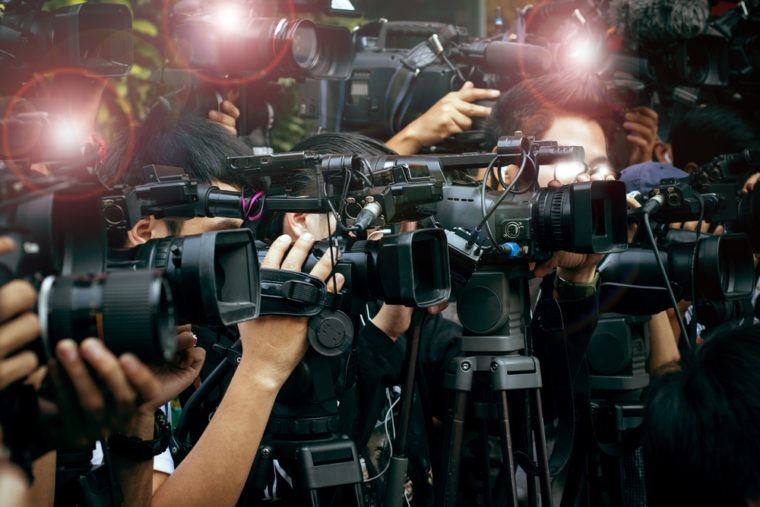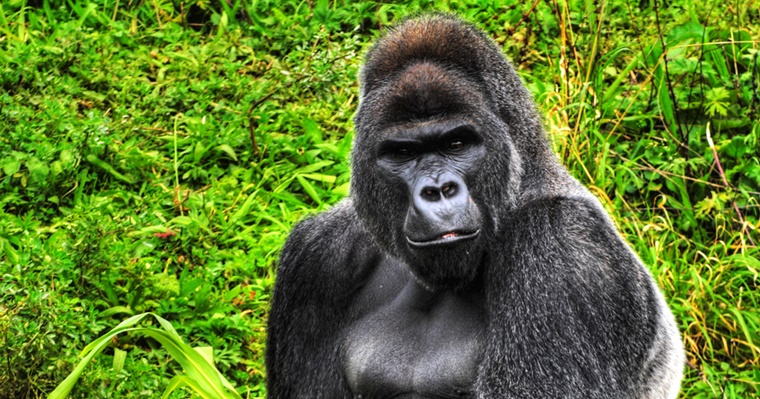Gone are the days when reporters for the evening news had the exclusive power to broadcast live from a given scene. Now, thanks to the rise of countless platforms – including Facebook Live, Persicope, YouTube, and Snapchat, of course, but also the likes of Twitch, Blab, YouNow, Ustream, Kamcord and Busker, to name a few — marketers and consumers alike are spoiled for choice when it comes to shooting live video from their own scenes.
And so the race is on among tech companies to establish dominance, as well as among brands to experiment to determine which platform resonates most with their audiences and therefore provides the most value.
For now, video marketing experts agree Facebook Live is the odds-on favorite, but, not surprisingly, they acknowledge Twitter, YouTube and Snapchat are also viable contenders. And, of course, the odds could change if, say, an Apple, an Amazon or a Microsoft decided to make a play with one of the aforementioned start-ups.
Here’s a look at how Facebook is asserting its dominance in live streaming, as well as how other players are countering – and what this means for brands and marketers.

‘Everyone and Their Mom Quite Literally is on Facebook’
Facebook’s biggest advantage is arguably its nearly 1.7 billion active monthly users.
Or, as Luke Watson, platforms expert at live streaming network Roker Media, put it, Facebook is best positioned to dominate “because they’re Facebook, and everyone and their mom quite literally is on Facebook.”
Further, Brian Shin, CEO of video performance analytics firm Visible Measures, said satisfying vanity is a big part of live content, which implies the need for a large audience “and if you don’t have big distribution, your platform will ultimately fail.”
But while Facebook doesn’t need to recruit users, it does have to solicit content, which is why it is reportedly paying $50 million to brands and celebrities like CNN, Vox Media, Mashable and Gordon Ramsay to create said content.
“So it’s not a matter of Facebook looking for people to make the best content, it’s more about volume and reach,” Watson said. “That’s their approach. And I think it’s working.”
‘Let’s Give $1 Million to Somebody Who Seems to Know What They’re Doing.’
Greg Jarboe, president of content marketing agency SEO-PR, however, likened this to YouTube’s 2011 original channel initiative, in which the platform gave $100 million to partners like Madonna, Jay-Z, and Ashton Kutcher to create content in new channels.
“The net-net was, they dropped the program two years later because that model of ‘let’s give $1 million to somebody who seems to know what they’re doing’ didn’t produce the kind of results that paid for itself and the program was written off,” Jarboe said. “I expect Facebook is trying to play catch-up. It hasn’t had a partner program, but I wouldn’t count on it to pick winners. The fact that some of the people who receive money are the usual suspects – like, okay, fine, give money to New York Times. That’s always a good shot – but, at the end of the day, it doesn’t reinforce the kind of winners we’ve seen emerge on YouTube.”
Instead, the content that ended up paying YouTube’s rent was in many cases created by young YouTube stars, he said.
“So picking winners is really, really hard to do in this kind of environment,” Jarboe added. “You want to encourage creativity that will generate winners as opposed to, ‘Hey you, big brand, here’s some money.”
‘What’s Really Causing a Lot of Emphasis on Live is the Excitement and Engagement Around Snapchat’
For Shin, it ultimately boils down to where consumers are not just posting and/or consuming content, but also creating it. And that is how consumers use Snapchat, which may very well be Facebook’s arch nemesis in live streaming.
“Snapchat has a good position – its issue is expanding to the mainstream,” Shin added. “But they have a strong foothold because consumers are using it as a content creation vehicle and not just for publishing and distribution.”
And this is precisely why Facebook is paying entities to create on its platform as well.
“It’s smart for Facebook,” Shin said.
In fact, Shin also said Facebook’s push into live content is really an effort to fend off Snapchat.
“That’s a big problem for these guys. If you recall when Google announced Google+, Facebook went into crisis mode and said, ‘We have to stop this before it really gets a foothold and they start to eat into market share,’ and it’s very much the same thing with Snapchat,” he said. “Live Stories and Snapchat Discover really are the most engaging of-the-moment experiences now. That’s one of the things that caused a major problem for Twitter, for example…I think what’s really causing a lot of emphasis on live is the excitement and engagement around Snapchat.”
Further, Shin said Facebook has demonstrated “an incredible ability to respond to a crisis” and it has been able to “sort of see the problem before it’s too late” and act accordingly.
“Facebook has a healthy sense of paranoia and they combine it with a very agile mentality,” Shin said. “These guys can shift on a dime and rally the troops and feel like they’re moving to a bigger mission to fight the battle, which gives them a lot of resilience in the market.”
However, while Snapchat still lags regarding advertising options, Shin said it could easily integrate features like commenting or repurposing live videos as assets to advertise against and he only sees these opportunities expanding.
And, he noted, Snapchat is in a powerful position as a creation platform as this is the point where brands and marketers have the most engagement with users.
“Snapchat is now offering the ability to have marketers…sponsor filters…so a user live snapping something in real life can put a brand filter directly on them,” Shin said. “A brand can be incorporated directly into the creation experience, but if it is just integrated at the publishing level, you’re not really integrated. You’re next to the activity. So Snapchat has an interesting marketing opportunity there with brands being built into the filters and geotagging.”
Facebook, on the other hand, has live commenting, which Shin said is a powerful real-time feature.
‘This is a Fast Follower Kind of Scenario’
At the same time, Jarboe cautioned against getting caught up in the “feature du jour” and noted any given platform can incorporate identical features over the course of this so-called horse race.
“So the real challenge in trying to pick an ultimate winner is figuring who is putting what kind of development effort behind this to basically enable that platform to continually update what they’re offering and ultimately leapfrog whatever current advantage someone may have temporarily,” he said. “Otherwise, the first mover – Meerkat – would be leading the charge. This is not a first mover kind of scenario. This is a fast follower kind of scenario.”
‘That’s Why They’re Terrified about Snapchat’
Another challenge for Facebook is that while it is good at recommending new content, it is not as good at helping users find older content, Shin said. Snapchat, on the other hand, curates entire real world experiences like Copa America or the NBA Finals, which he said is “the best way to get a sense of what’s going on right then even if you’re not watching the game. Try to do the same thing on…YouTube and Facebook. That’s why they’re terrified about Snapchat.”
Discovery is also where YouTube struggles with of-the-moment content.
“YouTube could have been the monster three years ago, but it never went whole hog into [live],” Shin said. “If you go to YouTube now, all the videos are recommended primarily based on other videos you’ve watched in the past. The concept of the feed is very weak and not having an interface makes it harder to recommend things of the moment and not related to the past. That’s a big challenge going forward.”
‘Twitter…is Scattered.’
Per Shin, the issue for Twitter is that it has multiple video experiences, including Periscope and Twitter Video, and it needs to meld them together better.
“Facebook has done such a masterful job – even if a video is not from Facebook…if it’s a YouTube link or a video from Instagram – in making [a seamless] user experience [and] melding it into the News Feed. Snapchat has redesigned its Discover and Live Story interfaces so it makes more sense, but Twitter has the problem that it is scattered. If they can pull it together in a single viewing experience, live will work so much better.”
Further, Watson noted that while the Periscope integration means any Twitter user can conceivably discover content, there is still a distinction between a Periscope follower and a Twitter follower.
“It’s an interesting platform from a product standpoint, and it has interesting features that might give it an edge from an experience standpoint, but it doesn’t matter if you can’t find users,” Watson said. “No creator wants to create for an audience of nobody or a small audience and certainly the users won’t be browsing for creators.”
‘It’s Not Going to be One Winner and Everyone Else Dies’
In terms of handicapping the race, Jarboe gave odds to what he called the “Big Three” — Facebook, YouTube, and Twitter – but he also noted there is room in the market for all of them.
“Yeah, one may have more market share than another, but I don’t see this as where you have to do one thing and ignore the others. Marketers need to experiment and learn the strengths and weaknesses and ultimately what they want to do is master the skill set of how to take advantage of live streaming generally on whichever platform [they] happen to have at the time or that works in this circumstance when used in this situation,” he said. “It’s not going to be one winner and everyone else dies.”
Do you have a favorite live stream platform yet? If so, which one? Why?
Image Credits
Featured Image: mhprice/DepositPhotos.com
In-post Photo: khunaspix/DepositPhotos.com




